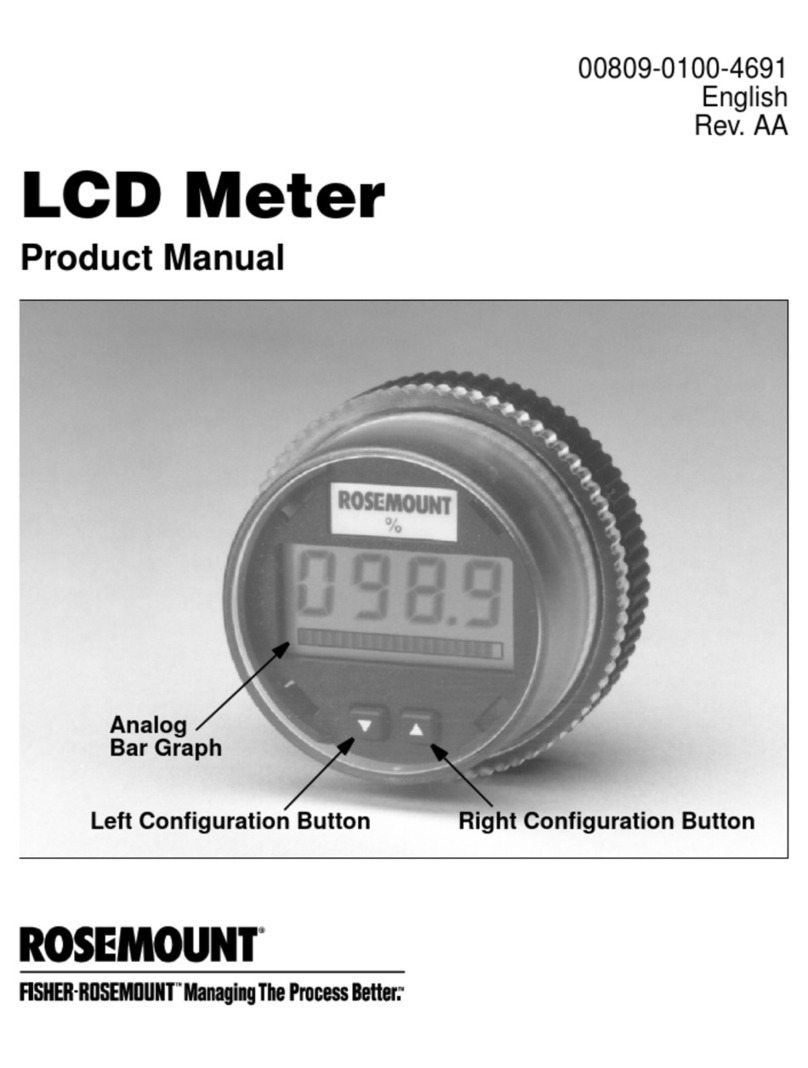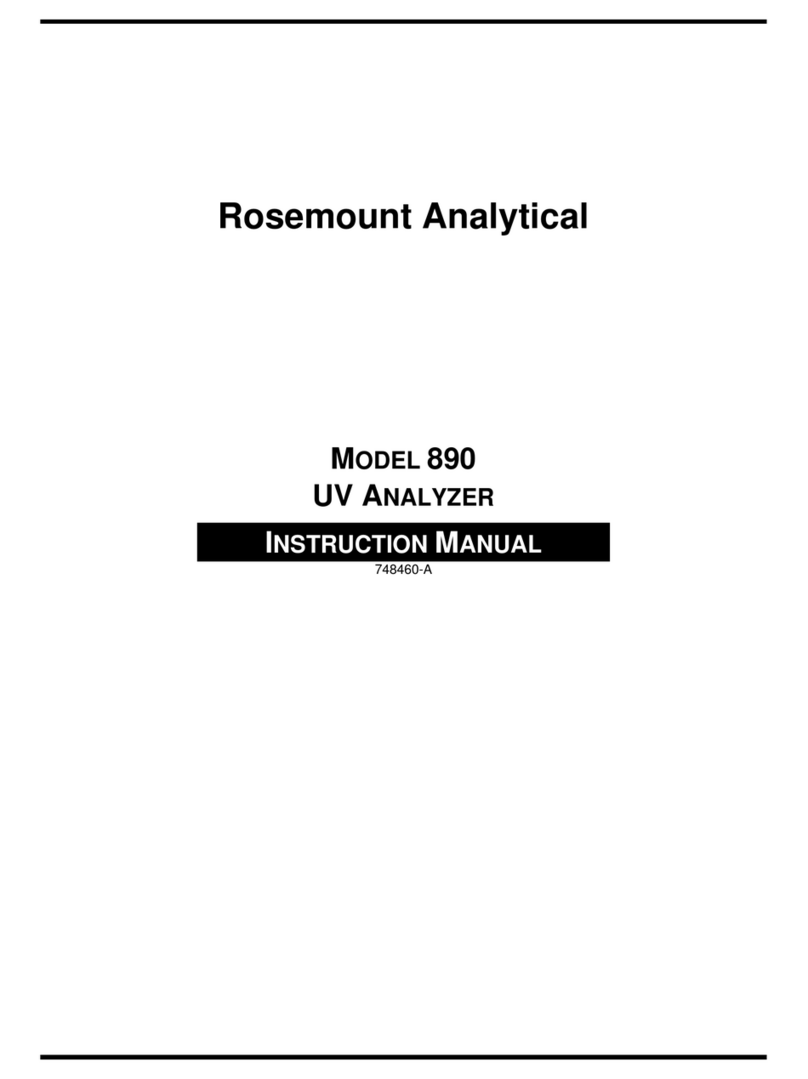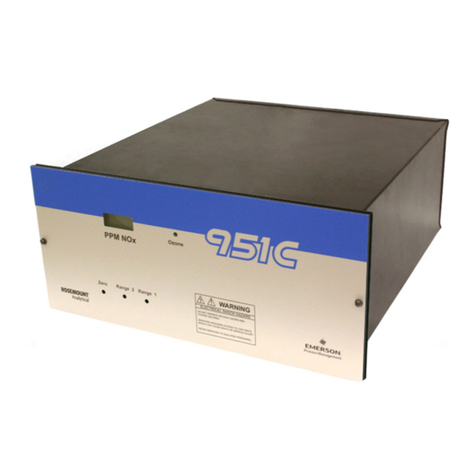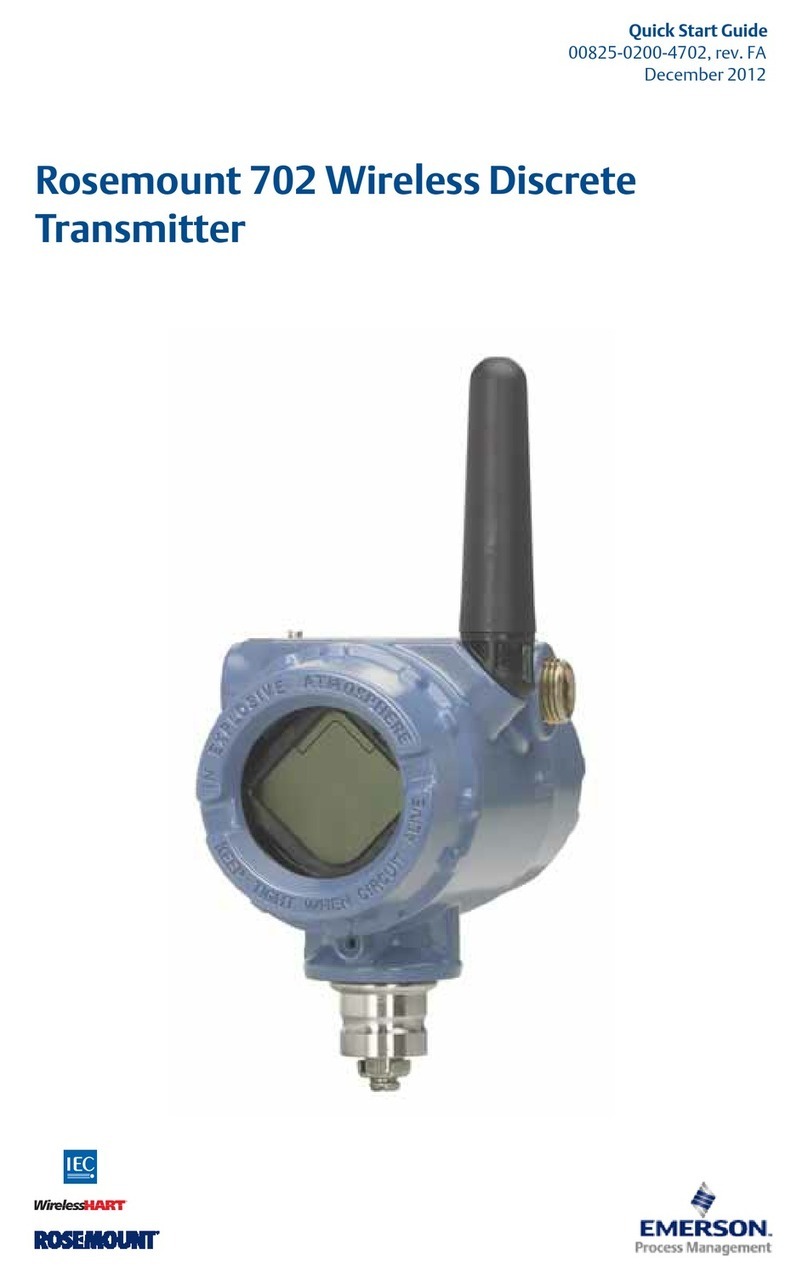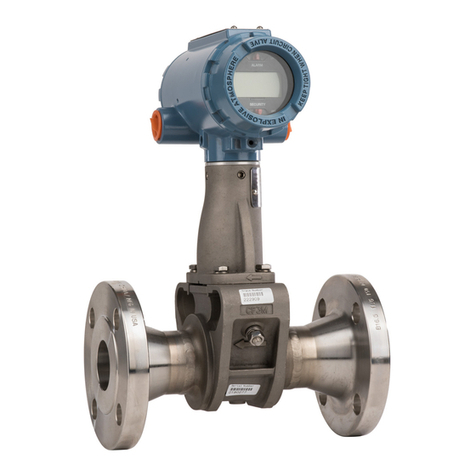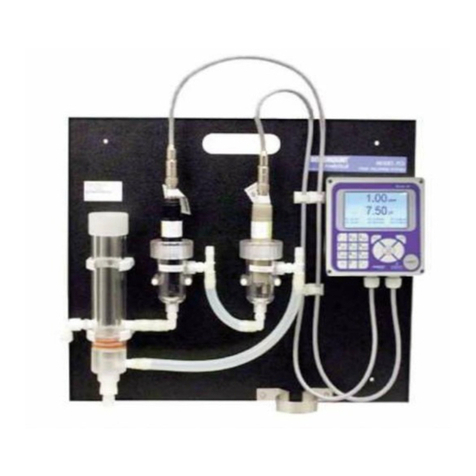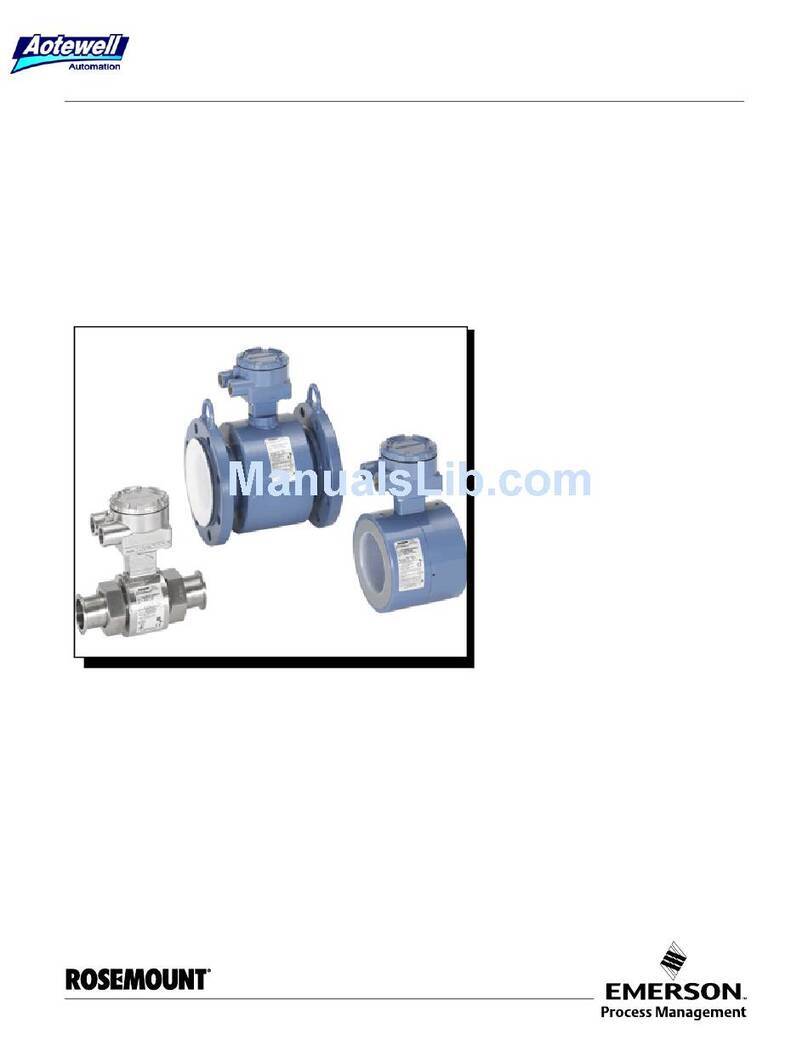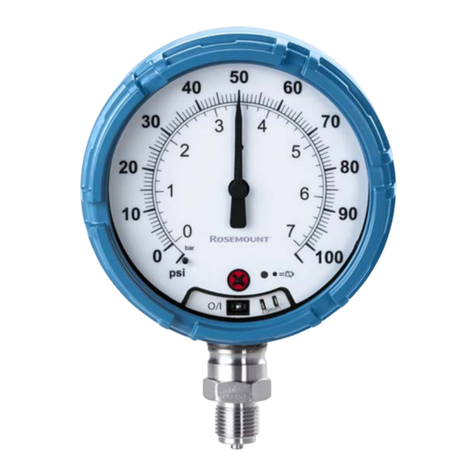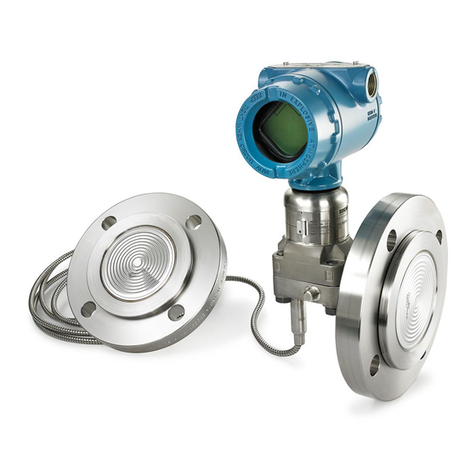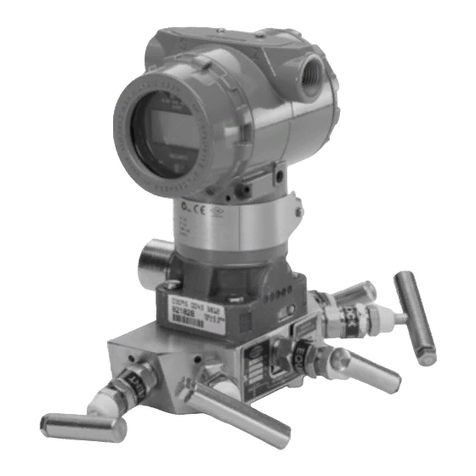
Reference Manual
00821-0100-4810, Rev AA
March 2004
1-2
405 and 1595
TESTING Tests performed on the 405 / 1595 primary flow elements are divided into
three major categories:
• Mechanical and structural testing
• In-house performance testing
• Independent laboratory testing
All categories are on going and continue to be a part of the current
Rosemount test program for the 405 / 1595 primary flow elements.
Structural Testing Rosemount performed integrity testing for:
• Allowable stress limits
• Hydrostatic Pressure
• Thermal Effects
•Vibration
At the following labs:
• Hauser Laboratories, Boulder, CO
• Rosemount Vibration Laboratory, Eden Prairie, MN
In-House Performance
Testing
Hundreds of flow tests were performed in the Rosemount flow laboratory in 2
to 10-in. (50.8 to 254 mm) pipeline, using independently certified magnetic
flowmeters or the laboratory's gravimetric system as primary reference.
Straight run requirements, run to run repeatability (w/ and w/o disassembly /
re-assembly), pipe schedule, and sensitivity to centering are some of the
in-house performance tests that were performed on the Rosemount 405P
Compact Orifice Plate primary element.
Baseline straight run, run to run repeatability (w/ and w/o disassembly /
re-assembly), straight run requirements, pipe schedule, sensitivity to
centering, and gaskets are just a few of the in-house performance tests that
were conducted on the Rosemount 405C and 1595 Conditioning Orifice Plate
primary elements. Extensive testing was also performed to determine
minimum straight run requirements after the following upstream fittings; single
elbow, double elbows in plane, double elbows out of plane, reduction,
expansion, and butterfly valve. Performance was also evaluated with up to 20
degrees of swirl induced.
Every Rosemount 405C and 1595 Conditioning Orifice Plate primary element
is flow calibrated as part of the manufacturing process. A calibration report for
either a 3 point (option code WC) or 10 point (option code WD) calibration can
be provided for shipment with the product.
Independent Testing Rosemount 405 and 1595 primary flow element models were tested at three
independent laboratories:
• Colorado Engineering Experiment Station, Inc. (CEESI)
• Southwest Research Institute (SwRI)
• Foxboro Co. Flow Lab
Certified flow-data sheets were supplied from each of these facilities.
Representative samples of tests conducted at Rosemount and independent
laboratories are in Section 3: Test Facilities and Flow Tests.
